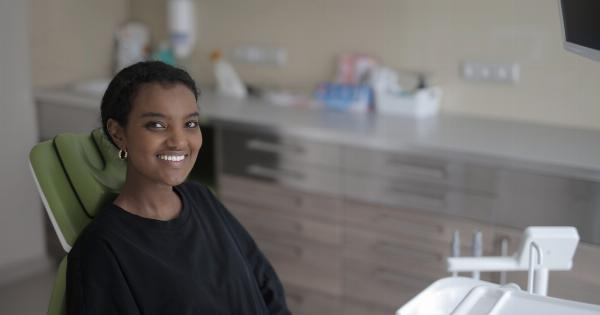Warts are common skin growths caused by the human papillomavirus (HPV). They are characterized by small, rough bumps that can appear on various parts of the body, including the hands, feet, and genitals.
Warts are generally harmless and can go away on their own, but they can be unsightly and may cause discomfort. Identifying the presence of warts is crucial for early treatment and prevention of spreading.
Types of Warts
While warts can occur in different areas, they also come in various types:.
1. Common Warts
Common warts typically appear on the hands and fingers. They have a rough, grainy texture and are usually grayish-brown in color. Common warts may have tiny black dots, which are actually small blood vessels.
2. Plantar Warts
Plantar warts develop on the soles of the feet. Due to the pressure from walking or standing, they tend to grow inward, causing pain and discomfort. Plantar warts can be identified by their thickened skin and a small, pinpoint black spot at the center.
3. Flat Warts
Flat warts are smooth, flat-topped growths that commonly appear on the face, arms, and legs. They are usually pink, brown, or yellow in color and tend to occur in large numbers – sometimes even in clusters.
4. Filiform Warts
Filiform warts are long, narrow growths that often develop on the face, particularly around the mouth, eyes, and nose. They have a distinct appearance with tiny projections, giving them a “finger-like” or thread-like appearance.
5. Genital Warts
Genital warts are a sexually transmitted infection caused by certain types of HPV. These warts appear on the genitals or around the anal area. They can be flesh-colored, pink, or grayish in color and may cause itching, burning, or discomfort.
Signs and Symptoms of Warts
Identifying the presence of warts can be relatively easy with the following clues:.
1. Small Bumps
One of the most common signs of warts is the appearance of small bumps on the skin. These bumps can range in size from a pinhead to a pea and have a rough, uneven texture. They may be flesh-colored, pink, or brown.
2. Tiny Black Dots
Common warts often have tiny black dots that resemble seeds stuck in them. These dots are actually blood vessels and are known as thrombosed capillaries. They can help distinguish warts from other skin growths.
3. Pain or Discomfort
Warts are usually painless, but in some cases, they can cause discomfort, especially when they are in areas that experience friction or pressure, such as the feet (plantar warts).
Pain or tenderness may also be experienced if a wart is located near a nail bed.
4. Clusters or Groupings
Some types of warts, such as flat warts, tend to occur in clusters or groups. They can appear as a patch of small bumps closely grouped together. This characteristic clustering can help differentiate warts from other skin conditions or moles.
5. Changes in Shape or Size
Warts may grow in size over time or change shape. They can become more raised, larger, or increase in number. Monitoring any noticeable changes is essential for early detection and appropriate treatment.
6. Itching or Irritation
In certain cases, warts can cause itching or irritation. This is particularly true for genital warts, which can lead to discomfort and a persistent urge to scratch. It’s crucial to avoid scratching warts to prevent further spread or infection.
Tips for Preventing Warts
While warts are contagious and can spread from person to person or from one body part to another, there are preventative measures you can take:.
1. Practice Good Hygiene
Regularly washing and cleaning your hands can help minimize the risk of contracting warts, especially after touching surfaces that may harbor the virus. Use hand sanitizers or soaps specifically formulated to eliminate viruses and bacteria.
2. Avoid Walking Barefoot
Warts thrive in warm, moist environments like public swimming pools, locker rooms, and communal showers. Wear appropriate footwear, such as flip-flops or sandals, to reduce direct contact with potentially contaminated surfaces.
3. Keep Feet Dry
Moisture allows the HPV virus to survive and spread. Make sure to dry your feet thoroughly, especially between the toes, after bathing or swimming. Consider using foot powder to keep your feet dry throughout the day.
4. Don’t Share Personal Items
Avoid sharing personal items, such as towels, shoes, socks, or razors, with individuals who have warts. This reduces the risk of direct contact and transmission of the virus.
5. Boost Your Immune System
A strong immune system can help fight off infections and reduce the likelihood of developing warts. Maintain a healthy lifestyle by eating a balanced diet, exercising regularly, getting enough sleep, and managing stress levels.
Treatment Options for Warts
While some warts may resolve on their own, it’s important to seek treatment if they are causing discomfort, spreading, or impacting your quality of life. Here are some common treatment options:.
1. Over-the-Counter Products
Various over-the-counter products, such as salicylic acid-based wart removers or adhesive pads, can be used to treat common warts. They work by gradually dissolving the wart tissue. Follow the product instructions carefully.
2. Cryotherapy
Cryotherapy involves freezing the wart with liquid nitrogen, causing it to blister and eventually fall off. This procedure is typically performed by a healthcare professional and may require multiple sessions for complete removal.
3. Electrosurgery
Electrosurgery uses an electrical current to burn or destroy the wart tissue. The procedure is done under local anesthesia and is effective for larger or resistant warts.
4. Laser Treatment
Laser treatment uses focused beams of light to destroy the wart tissue. It can be a suitable option for larger or extensive warts that have not responded to other treatments. Local anesthesia may be required.
5. Surgical Excision
For stubborn warts that do not respond to other treatments, surgical excision may be necessary. The wart and a small portion of surrounding healthy tissue are surgically removed. Stitches may be required, and scarring is possible.
Conclusion
Identifying the presence of warts is crucial for timely treatment and prevention of further spreading. Look out for small, rough bumps with or without tiny black dots, clusters, pain or discomfort, itching, or changes in shape or size.
By practicing good hygiene, taking preventive measures, and seeking appropriate treatment, you can effectively manage and prevent warts from affecting your daily life.



























